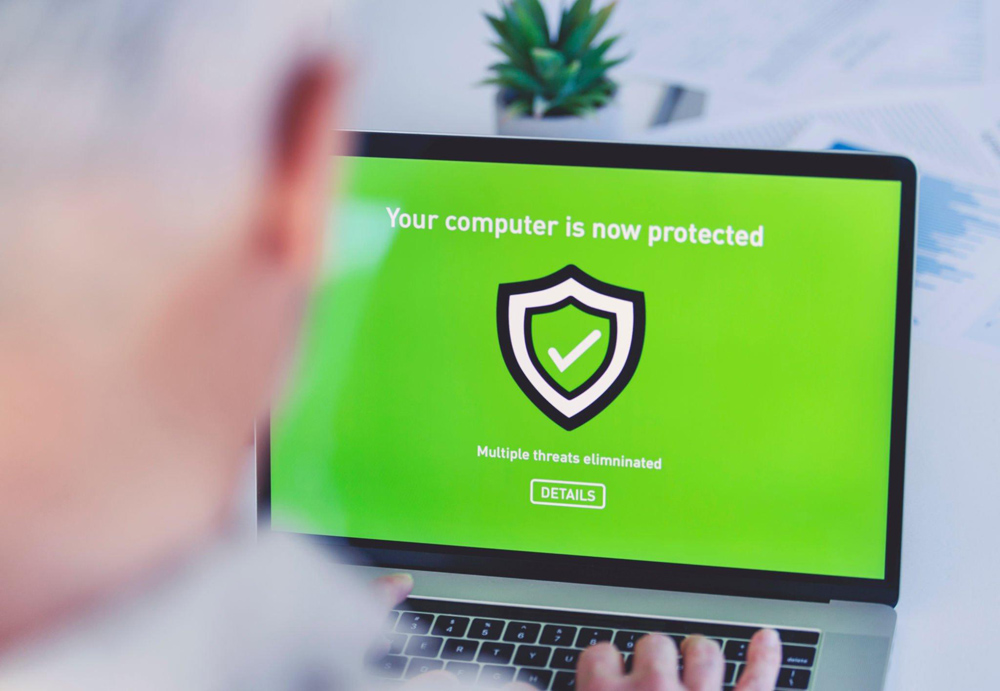Ransomware is malicious software designed to encrypt data or block access to a device until a user pays the hacker for the decryption key. It can be delivered via email, malicious links, or unsecured networks. Once ransomware infiltrates a system, it usually displays a message indicating that the user must pay a ransom to regain access to their files and data. Unfortunately, there have been cases where the hacker never delivers on their promise and keeps the money without providing any way out of the attack.
Table of Contents
Dangerous Ransomware Myths

Myth 1: Small Businesses Aren’t at Risk
Small businesses are often overlooked regarding cybersecurity threats. Still, the bad news is that they can be just as vulnerable as larger organizations. While large companies may have more resources and expertise, small businesses are often less prepared for ransomware attacks.
Small business owners may lack the technology infrastructure and personnel to protect against cyber threats, leaving them open to attack. Furthermore, with limited resources, recovering from an attack can be especially difficult for small businesses. The financial damage caused by downtime and data loss can be devastating—even leading to bankruptcy in some cases.

Myth 2: Antivirus Software Alone Will Protect Against Ransomware
The truth is that relying solely on antivirus software to protect against ransomware is risky. Antivirus programs are designed to detect and remove known malicious software. Still, they are not always able to recognize new threats.
Threat actors constantly evolve tactics and techniques to bypass ransomware defenses and traditional security measures. This means that antivirus programs may be unable to identify the latest strain of ransomware. As such, businesses must take additional steps to protect themselves from ransomware attacks. These steps should include regularly patching software and operating systems, backing up data in multiple locations, training employees to spot malicious emails, and implementing strong access control policies. These measures can help ensure your business is better prepared for a ransomware attack and other security breaches.
Myth 3: The Threat of Ransomware is Overhyped
The threat of ransomware is certainly not overhyped. Ransomware attacks have risen recently as cybercriminals become increasingly sophisticated and motivated to target organizations for financial gain. What’sWhat’s more, the impact of a successful attack can be devastating for businesses, with victims often facing expensive repairs, lost data, and disruption to operations.
Ransomware attacks cost around $10 million per incident, with some victims requiring up to $25 million for recovery. This highlights how costly and destructive these attacks can be – making it all the more important for organizations to take measures to protect themselves from this growing threat. Focusing on strengthening their security posture and adopting best practices such as multi-factor authentication, regular patching, data backups, and employee training are all essential steps companies should take to protect themselves against ransomware.
Myth 4: A Firewall Will Stop All Ransomware Attacks
Firewalls are essential components of a business’ security posture but are not the only line of defense against ransomware attacks. While firewalls can effectively block malicious traffic and suspicious activities, they cannot stop all ransomware attacks. Practicing good cyber hygiene is the best way to protect against ransomware and other cyber threats. Regularly patching systems is also important because outdated software can contain vulnerabilities that cybercriminals can exploit. Firewalls are an important part of any cybersecurity strategy. However, businesses should not rely on them alone to protect themselves from increasingly sophisticated ransomware threats.

Myth 5: Backups Will Get You Up and Running Without Missing a Beat
Storing regular backups of critical data offsite can be an effective way for businesses to recover from a successful ransomware attack quickly. The idea behind storing backups offsite is that they are kept away from the main system and can be accessed during an attack, allowing the business to return to normal operations without paying the ransom. However, even this measure isn’t foolproof.
To ensure that backups are effective, they should be tested regularly to ensure they are still up to date and can be accessed during an attack. Businesses should also consider utilizing a panel of experts or professional service providers specializing in ransomware recovery. These measures will help businesses mitigate the risk of data loss and disruption caused by a successful ransomware attack.
Myth 6: Once I Pay the Ransom, I Can Resume Business Right Away
Contrary to popular belief, paying the ransom does not guarantee that you can resume normal operations or that any stolen data will be returned. No guarantee that paying the ransom will result in anything at all. Cybercriminals may have already sold your data on the dark web, or they may keep the ransom money and refuse to give you any access or data back. Double extortion is a common tactic used by ransomware gangs where they not only encrypt your data but also threaten to release it publicly if the ransom is not paid.

Attractive Targets for Cybercriminals and Ransomware Gangs
Ransomware gangs are increasingly targeting businesses searching for high-value data and financial rewards, making them a prime target for cybercriminals. Organizations with large networks, complex systems, and valuable data are particularly vulnerable to ransomware attacks. However, it is not just the big players at risk; smaller organizations, such as those in the healthcare or financial services sector, can also be targeted by malicious actors.
Bad actors often look for organizations with weak security protocols and inadequate access controls, making them attractive targets for ransomware gangs. Service providers and cloud storage systems may also be targeted due to their larger user base and access to valuable data.
Social Security Numbers and Financial Data
The theft of social security numbers and financial data is among the most serious threats facing individuals and businesses today. Cybercriminals increasingly target sensitive information to access bank accounts, credit cards, and other financial instruments. Unfortunately, once an individual or organization’sorganization’s information is compromised, it can be difficult or impossible to repair the damage done. To protect against this threat, individuals should never share their social security number or other financial data with anyone unless they are certain the person on the other end is legitimate. Businesses should also take steps to secure their networks by implementing robust encryption measures and regularly patching for vulnerabilities. Companies should provide employees with cybersecurity training to identify potential threats and respond accordingly. By doing the above, organizations can protect themselves from becoming victims of financial fraud and identity theft.
Potential Targets with Unique Intellectual Property
Organizations with unique intellectual property (IP) are particularly attractive targets for ransomware attacks. Such organizations typically have valuable information and data, and cybercriminals know they can demand a high ransom in exchange for its safe return.
Businesses with confidential customer or employee data, or those that work on sensitive government projects, are also attractive targets. To protect against these threats, organizations should carefully monitor their networks for suspicious activity and take steps to secure their network access points with strong authentication measures and encryption protocols. They should ensure that their systems are regularly updated with the latest security patches and establish relationships with trusted vendors who can alert them to system vulnerabilities.
Organizations must also invest in robust antivirus software and ensure all employees understand the importance of cybersecurity best practices, such as avoiding clicking on suspicious emails or links.

Cyber Risk Management and Defense Strategies Against Ransomware Attacks
As the threat of ransomware attacks grows, organizations must take steps to protect their networks. Cyber risk management and defense strategies should be implemented to mitigate the risk of a ransomware attack, including multi-factor authentication, secure access points, encryption protocols, and regular system updates. Organizations should have a team of experts who can monitor for potential threats and advise on how to best protect against them. Businesses should also establish relationships with third-party service providers who can provide additional layers of security to protect against any malicious actors targeting their systems.
Multi-Factor Authentication for Increased Security Posture
Multi-factor authentication (MFA) is an essential security measure for organizations looking to bolster their security posture. MFA requires users to provide two or more identifiers to access secure information or networks. This makes it much harder for malicious actors to gain access, as they need the correct username, password, and other factors such as a token or biometric identifier. By utilizing MFA, organizations can dramatically reduce their chances of falling victim to a cyber attack. Furthermore, this extra layer of security will help ensure that any sensitive data remains safe and secure from unauthorized access. As the threat of cybercrime increases, investing in multi-factor authentication is essential for any organization looking to stay one step ahead of malicious actors.

Education to Break Down Common Misconceptions About Ransomware
Educating your staff on the latest cyber threats, such as ransomware, is a key part of any organization’s security strategy. Yet many common misconceptions about ransomware must be addressed to ensure everyone understands the threat and the steps they can take to protect themselves.
Misconceptions such as “ransomware only targets large organizations” and “my antivirus software will protect me,” as mentioned above, can create a false sense of security. In reality, ransomware attacks can affect businesses of all sizes, and no single security measure can provide full protection against this type of attack.
By educating your staff on the facts surrounding ransomware, you can empower them to recognize the signs of an attack, understand how it works, and mitigate any potential damage if they fall victim. Organizing regular training sessions or arranging panel discussions with experts in the field can help break down common misconceptions about ransomware and arm your staff with the knowledge required to keep your business safe from cybercriminals.
Wrapping Up
Ransomware is a serious threat to organizations of all sizes and should not be taken lightly. The common ransomware myths we mentioned today can lead to a false sense of security, which could jeopardize your business.
Organizations of all sizes are increasingly vulnerable to ransomware attacks. The best way for organizations to minimize the risk of a successful ransomware attack is to implement a few simple strategies to help ensure their networks remain safe and secure from malicious actors.


Recent Comments